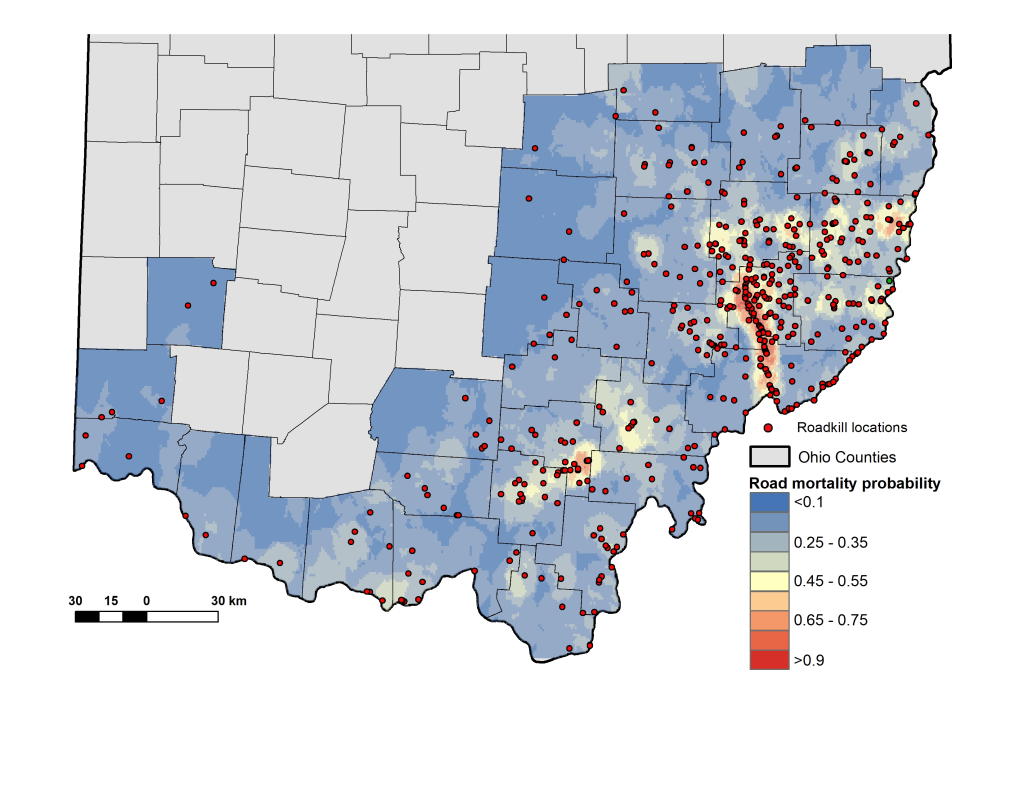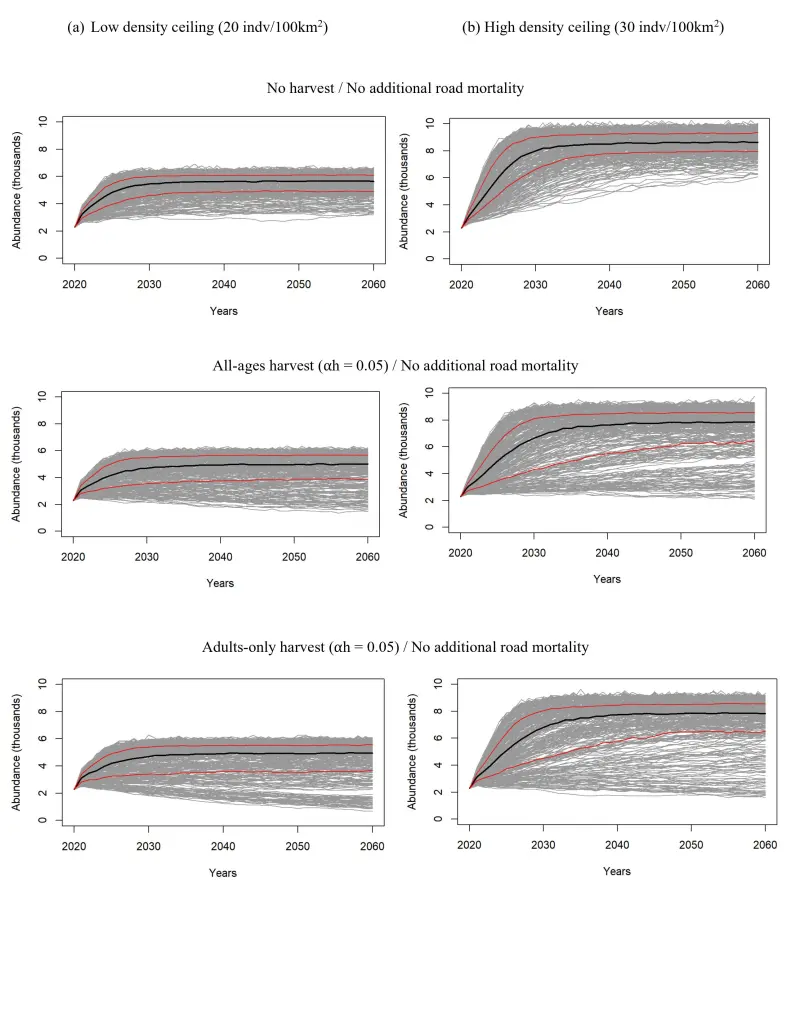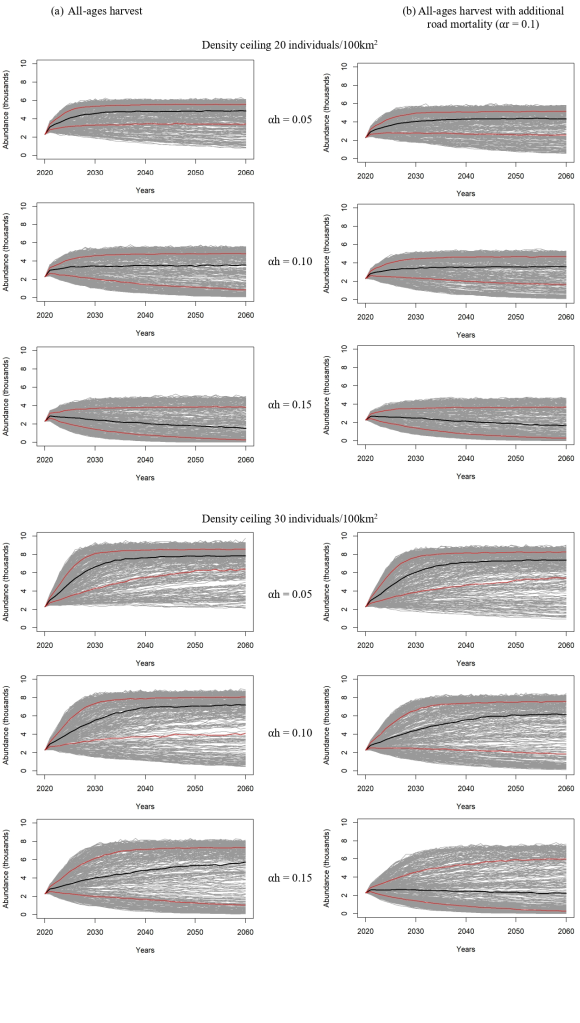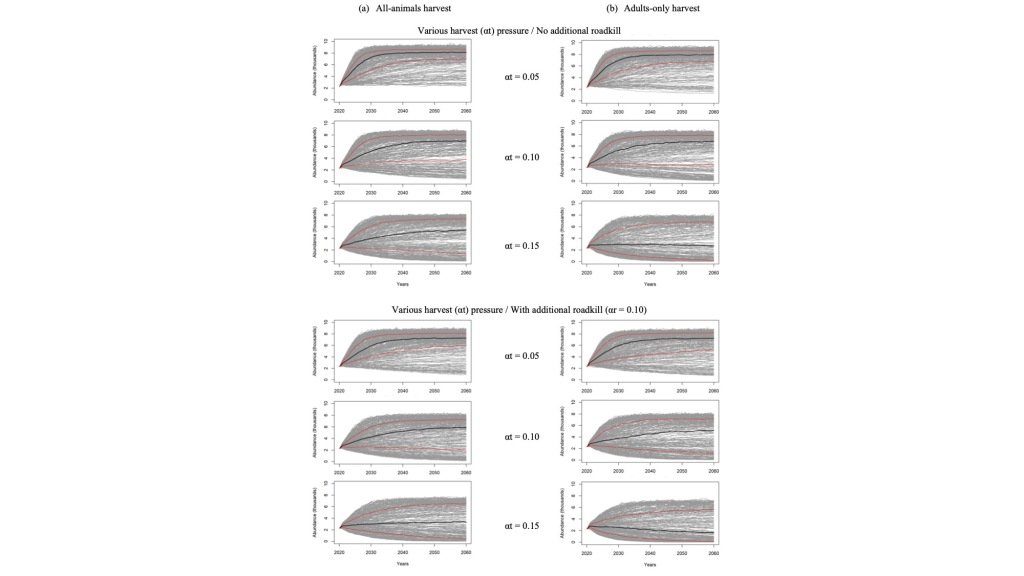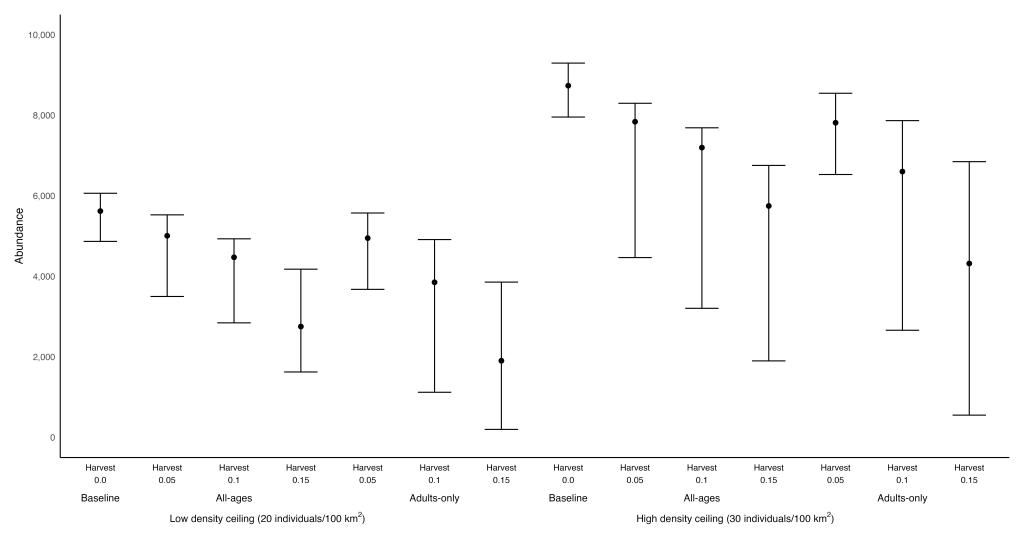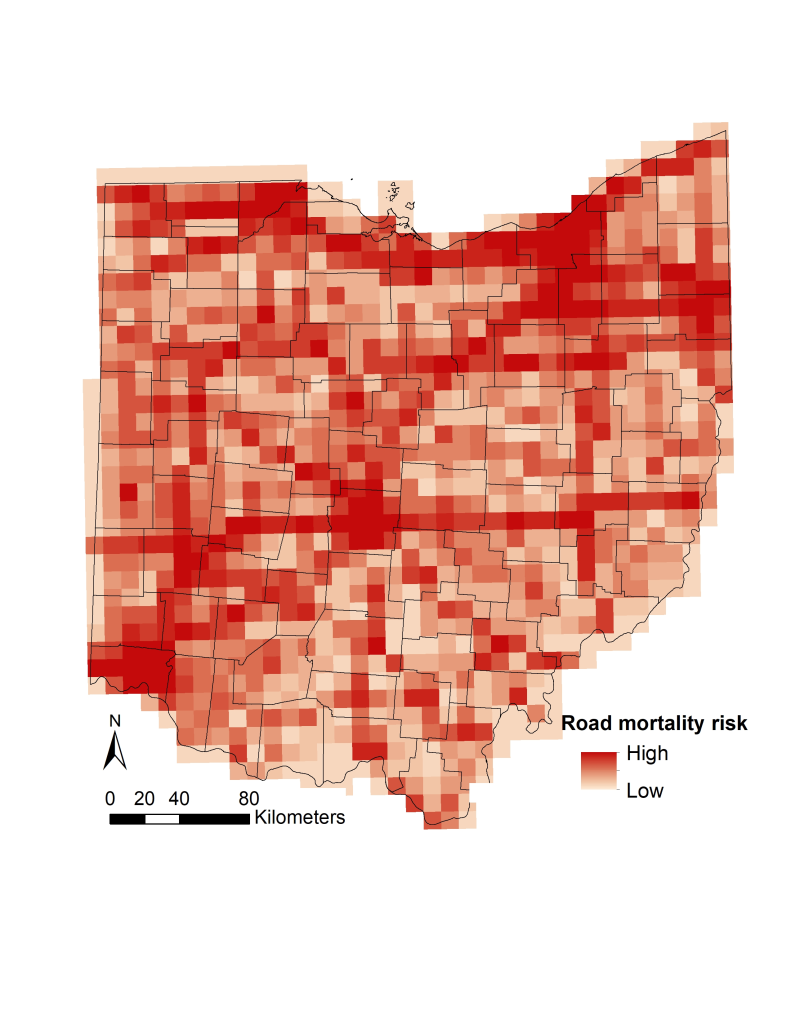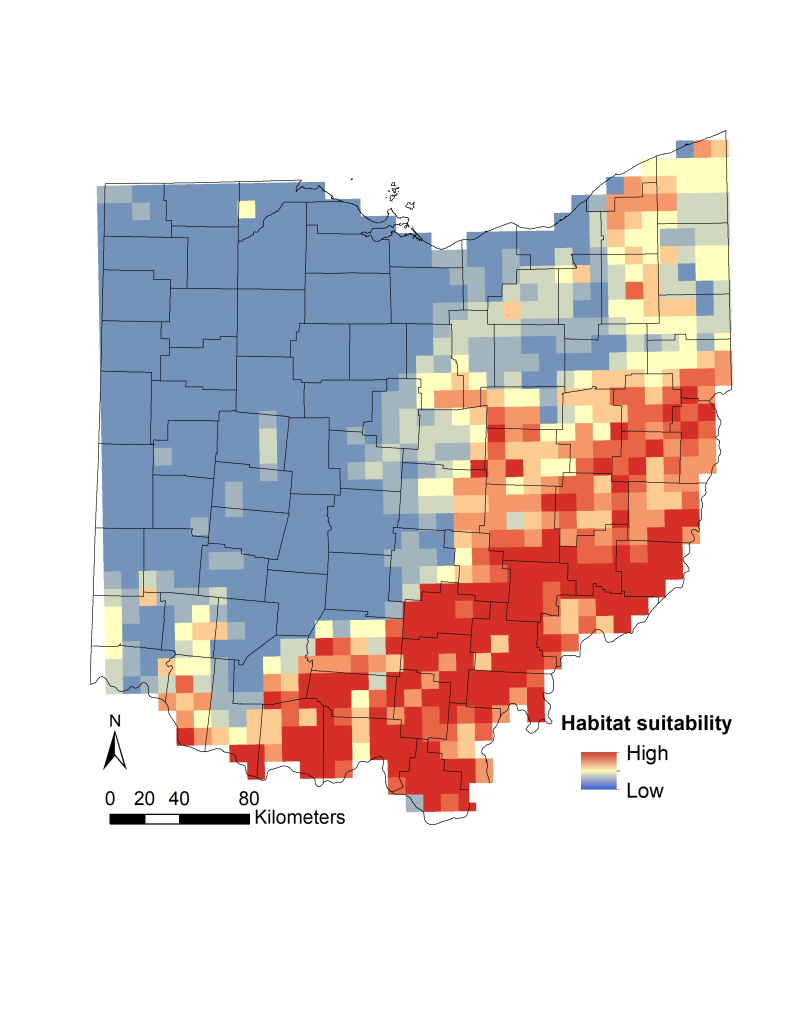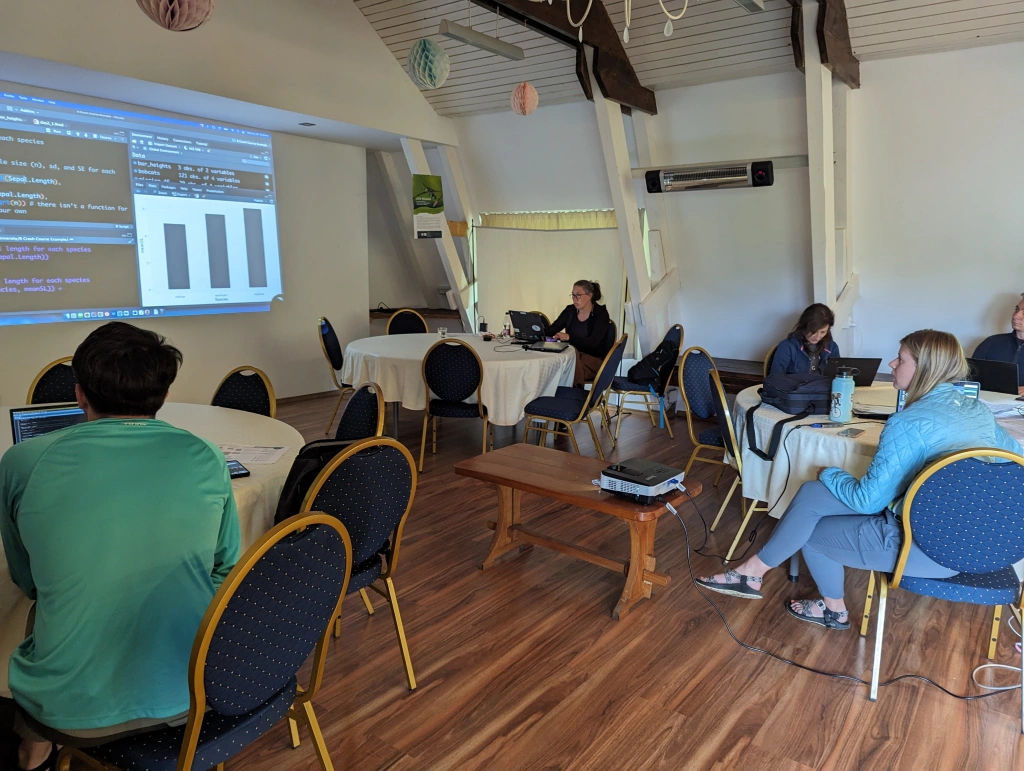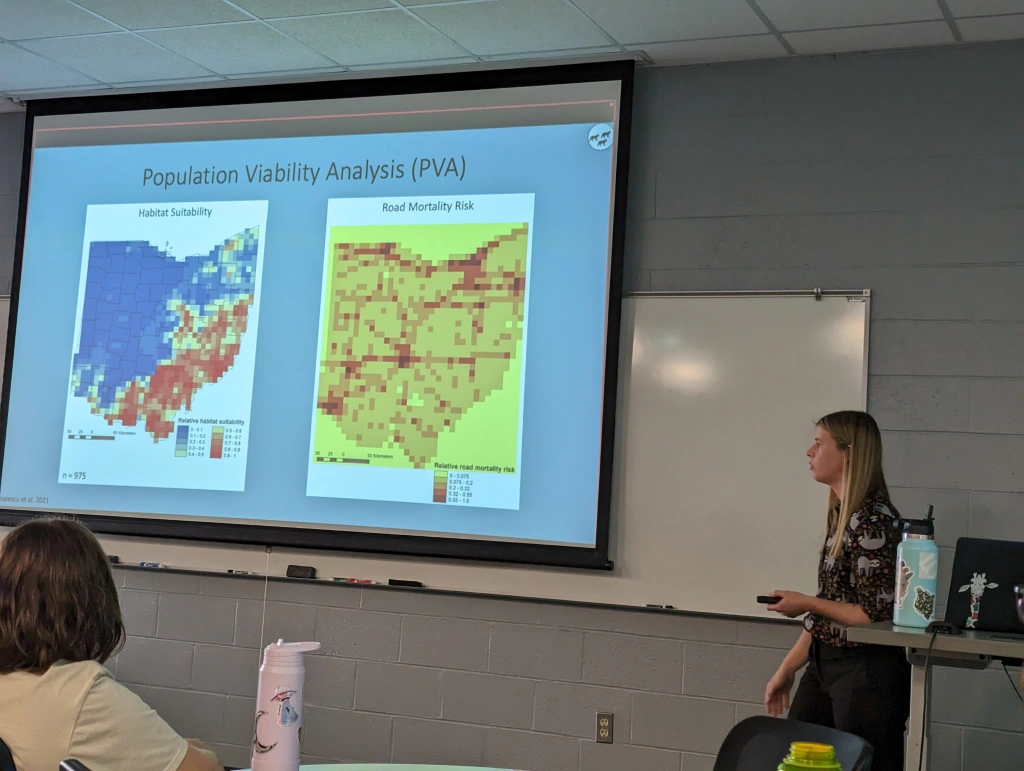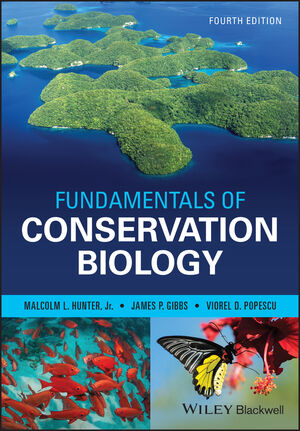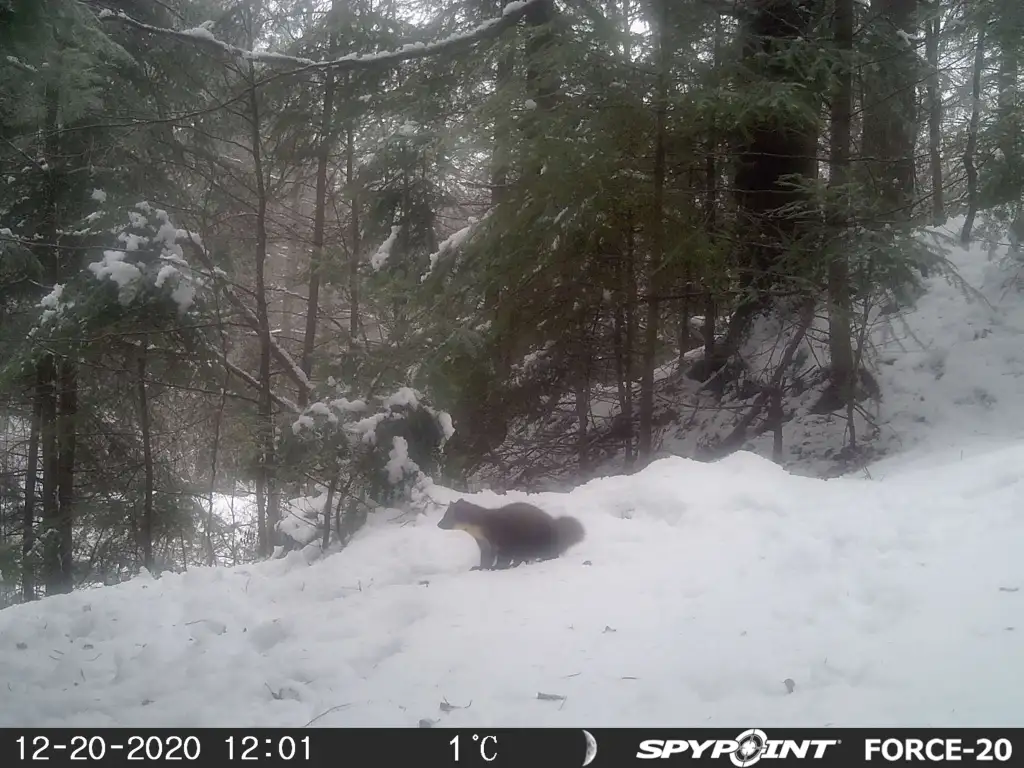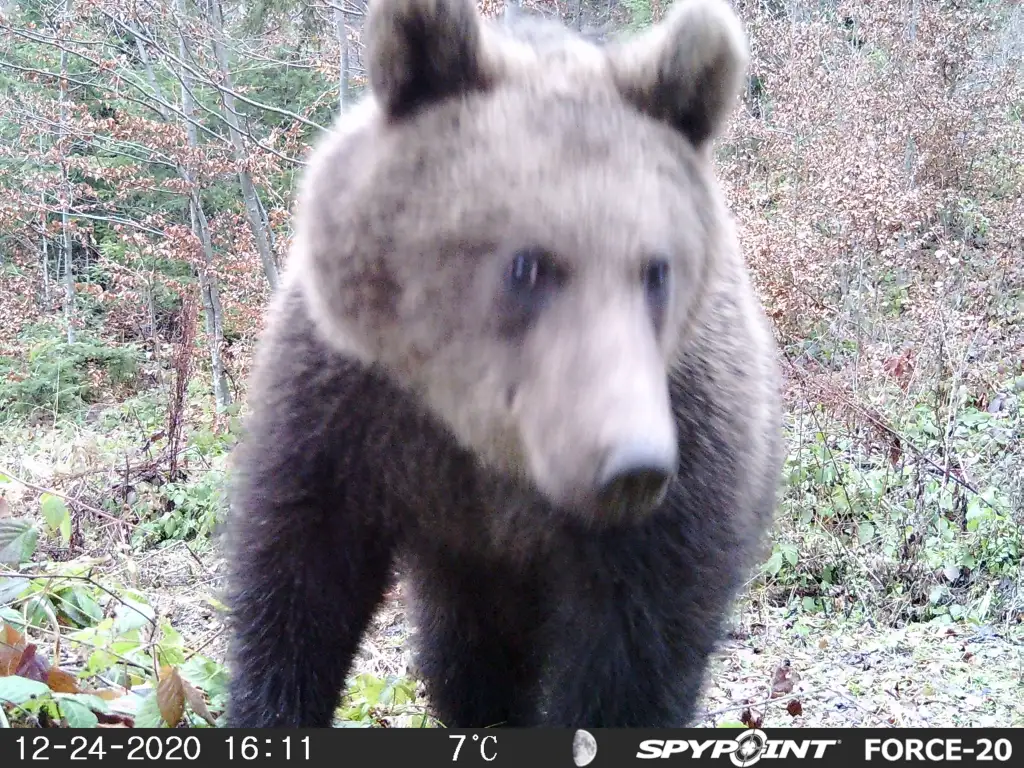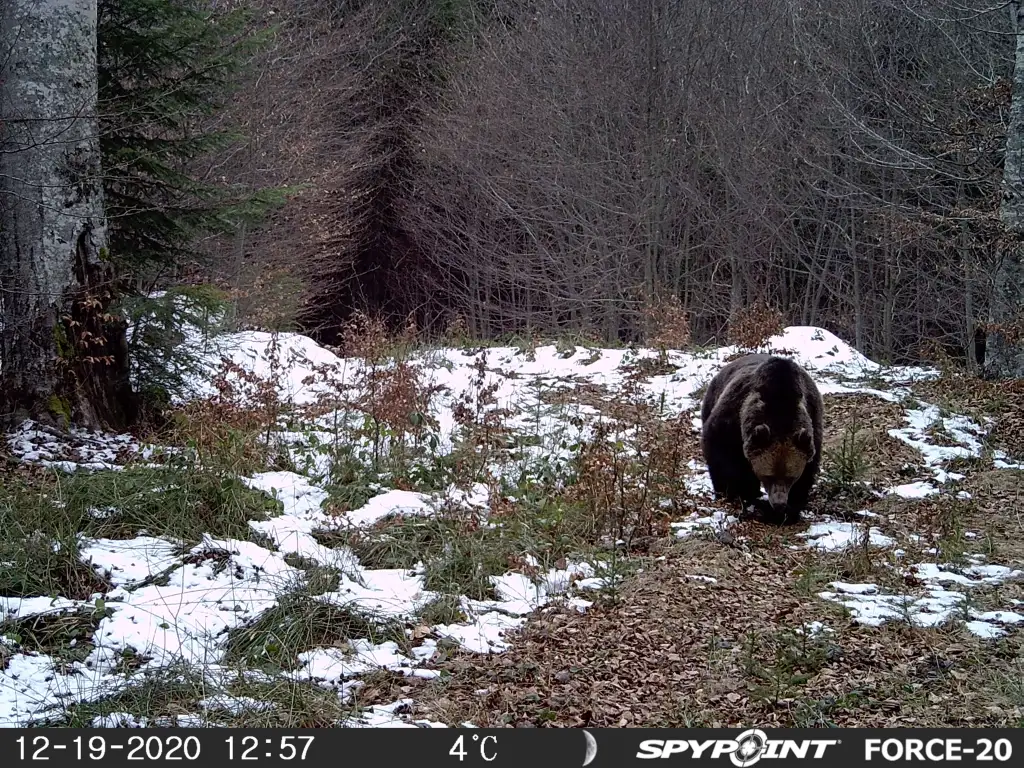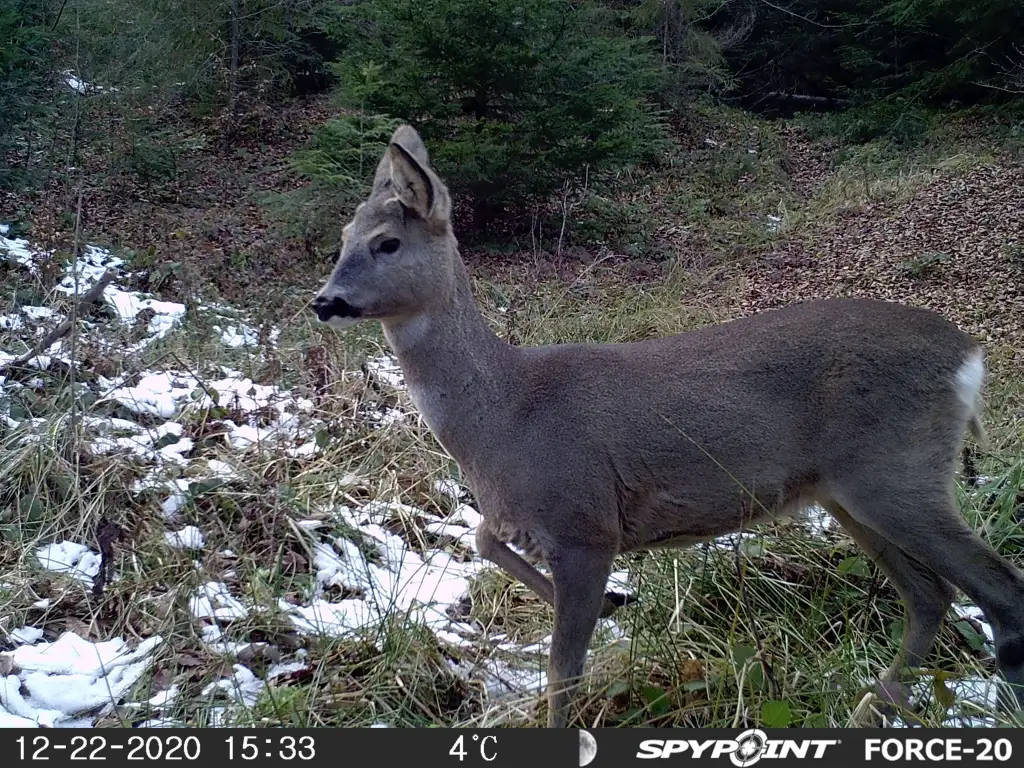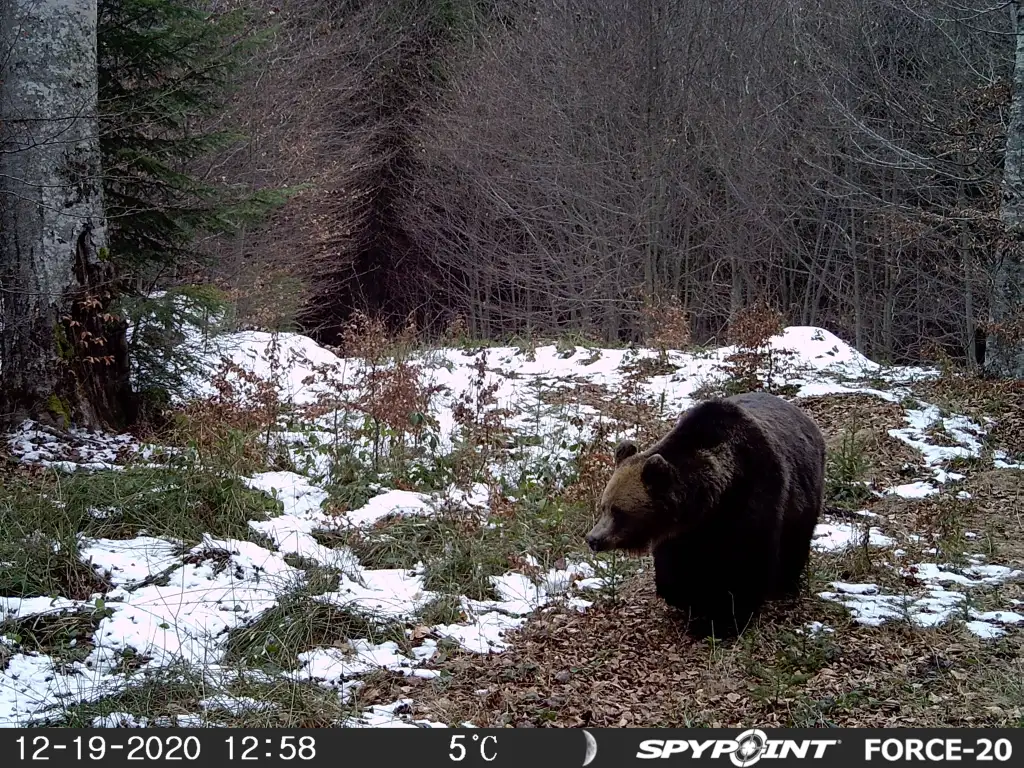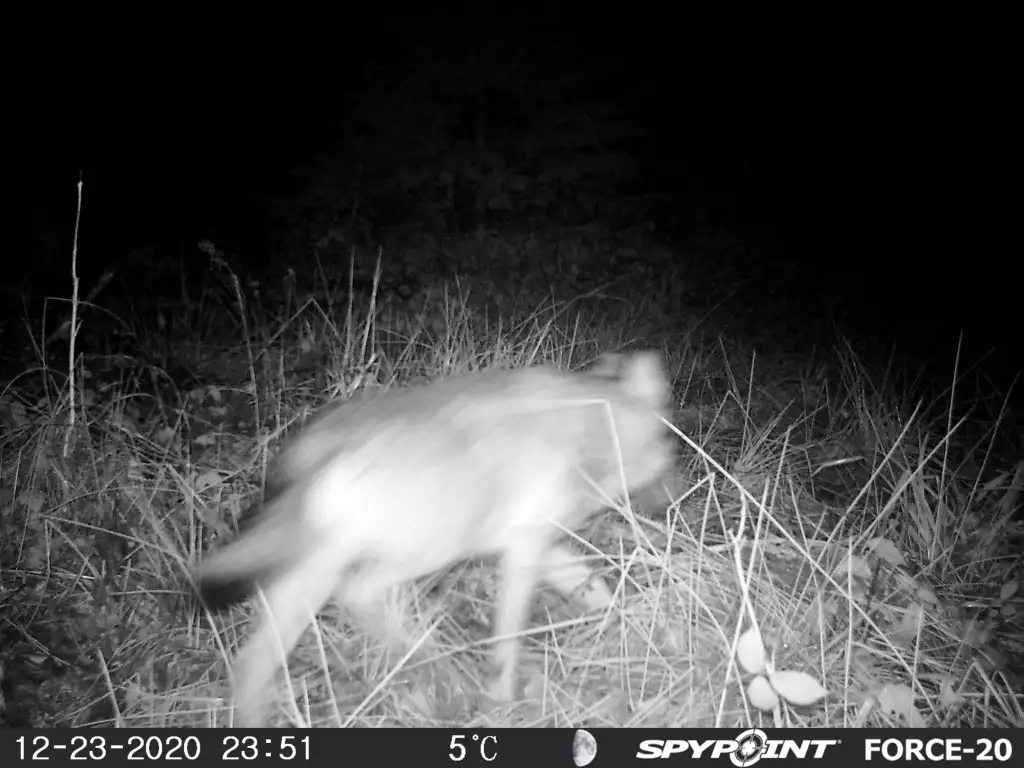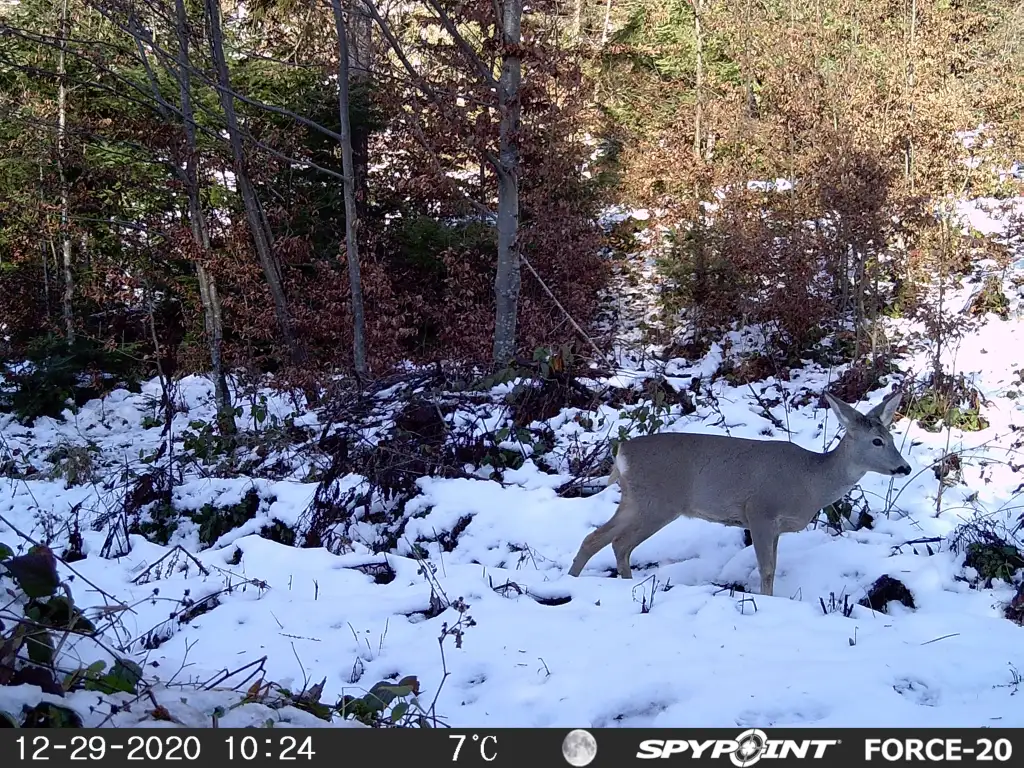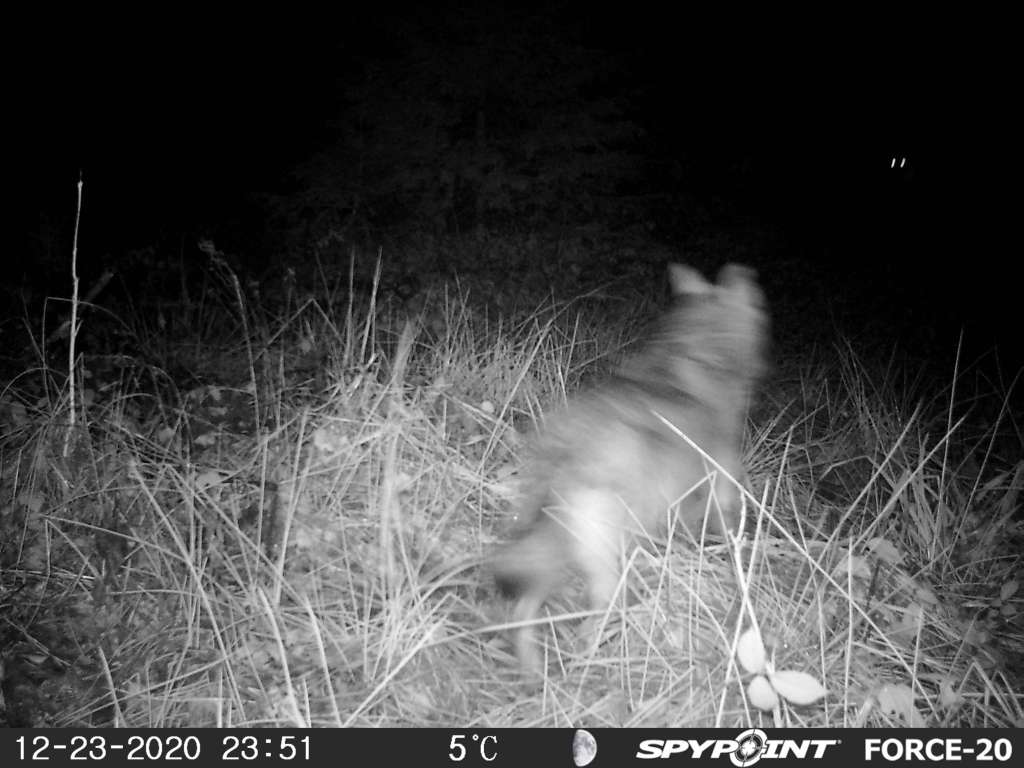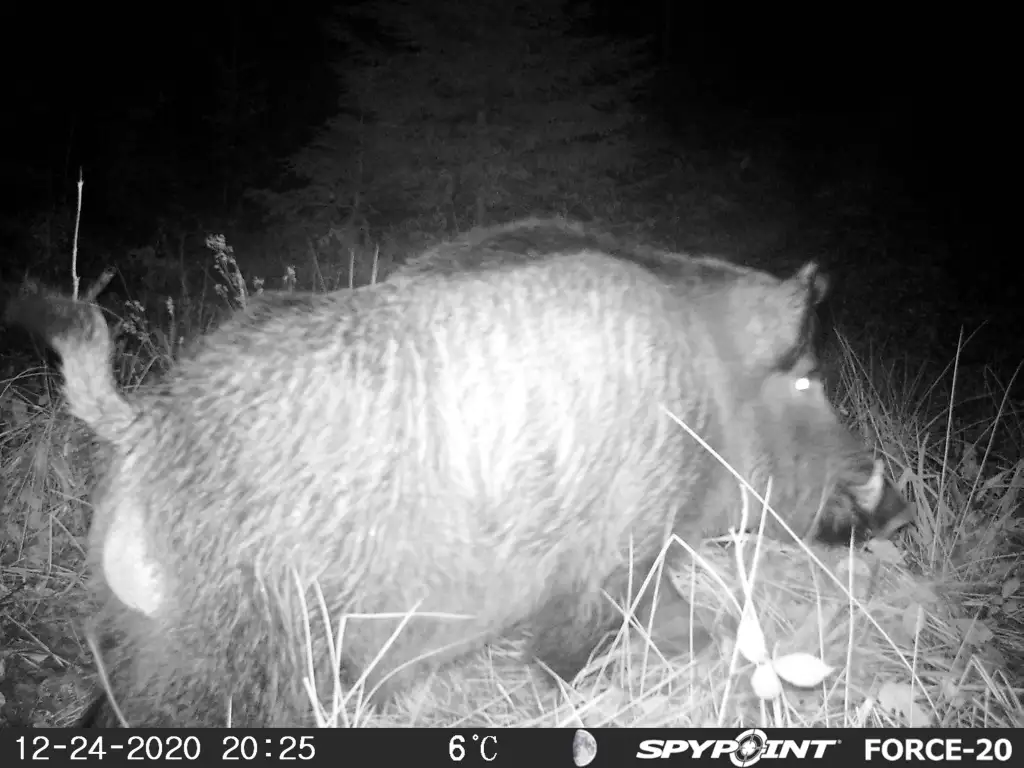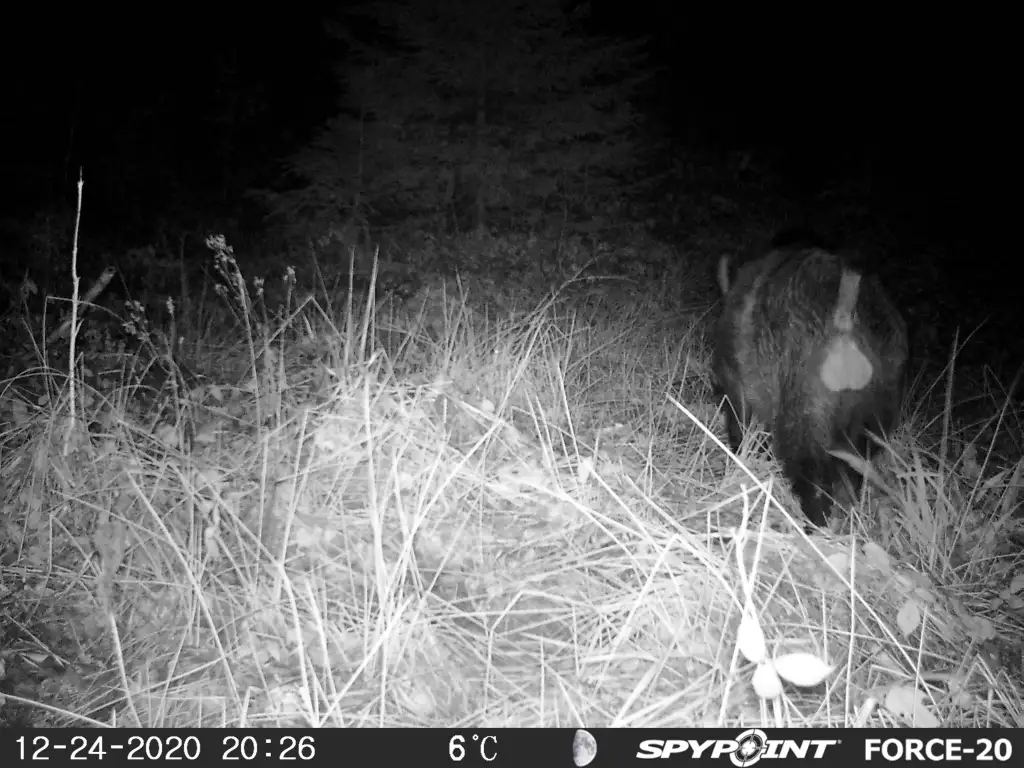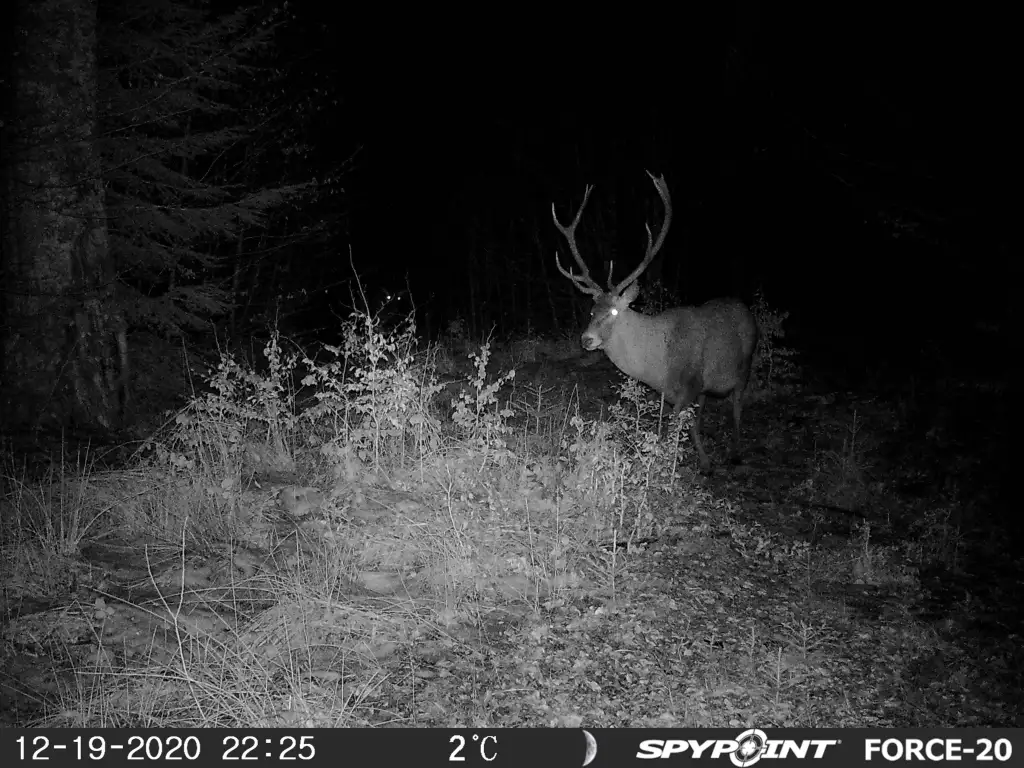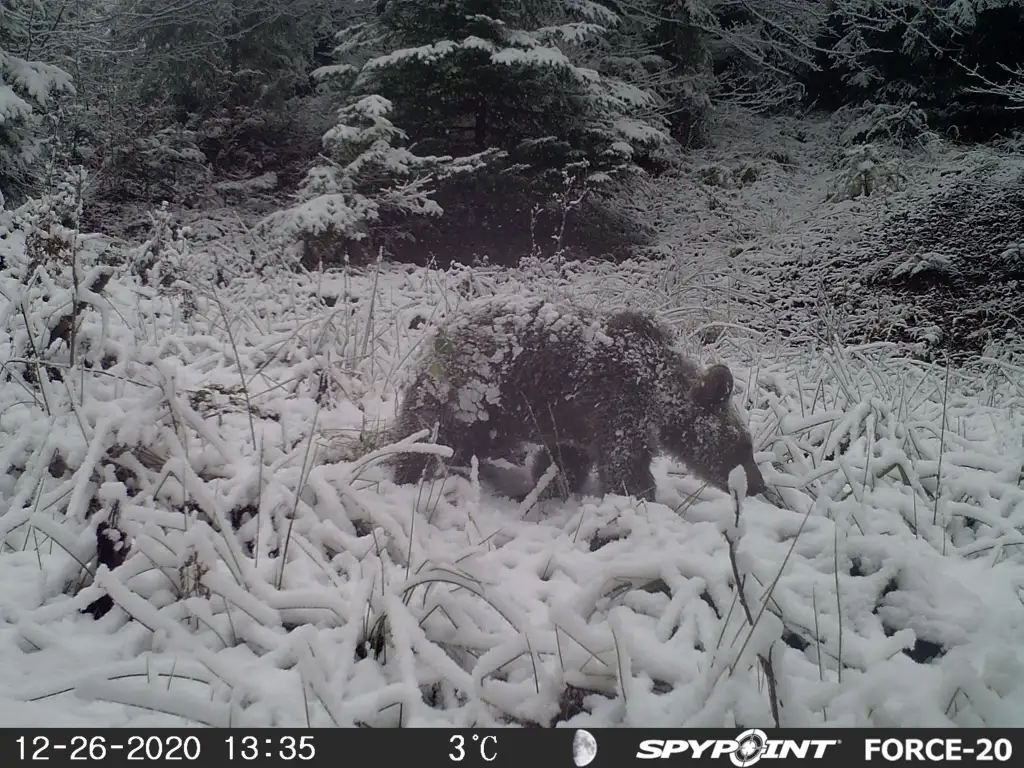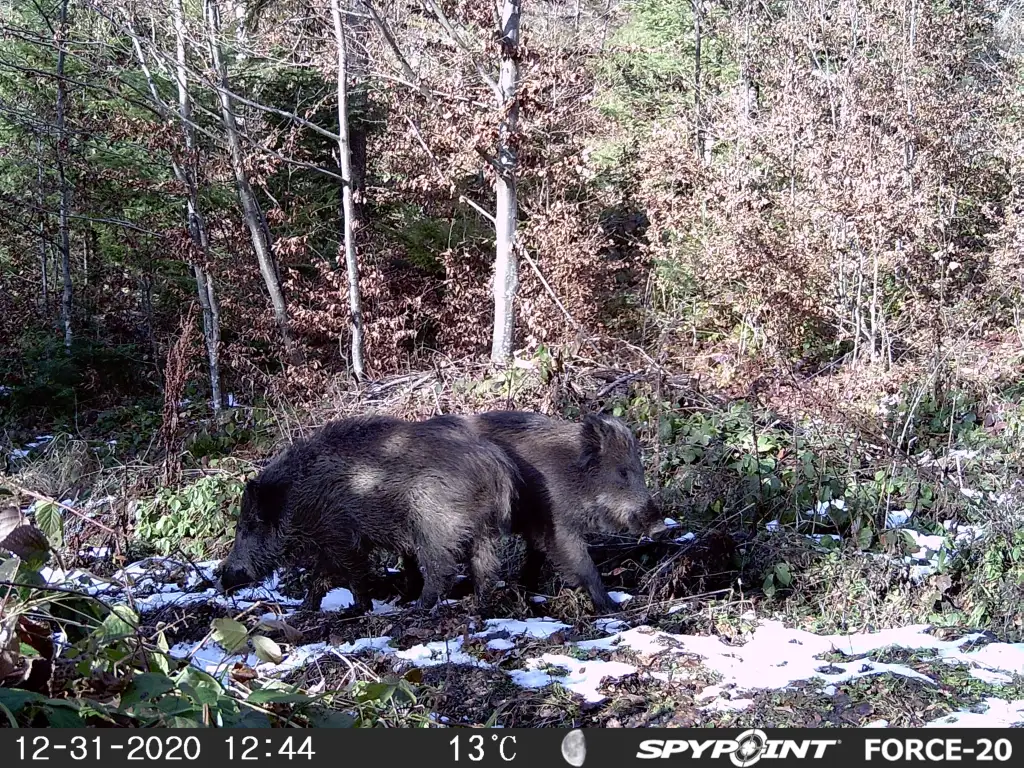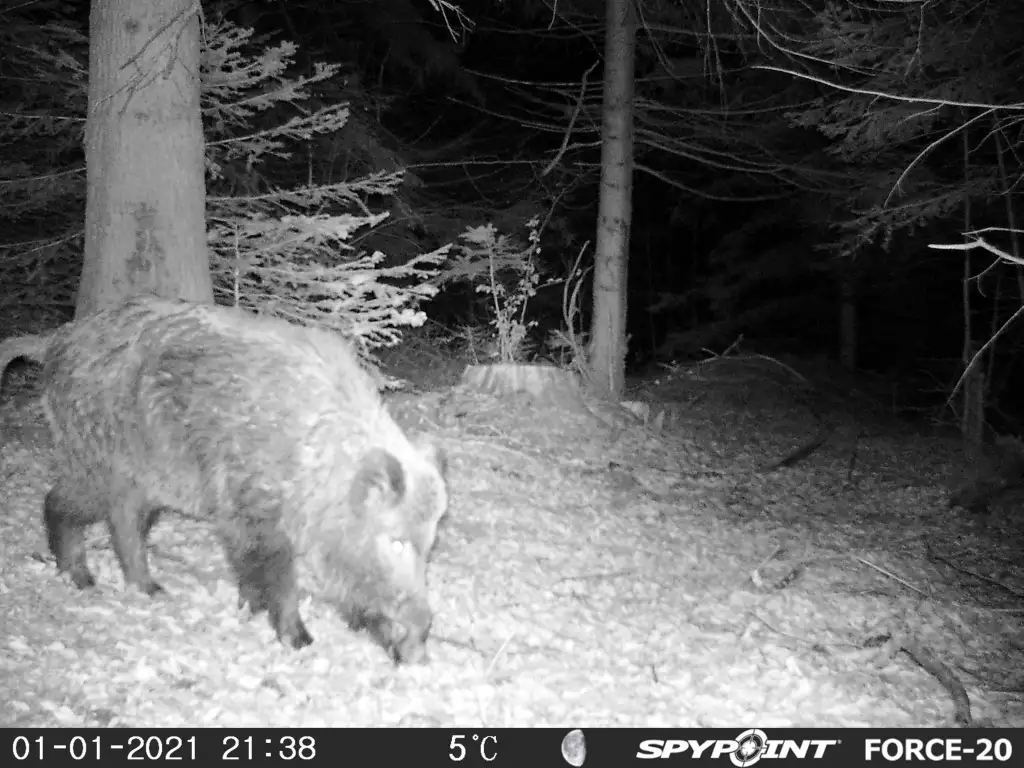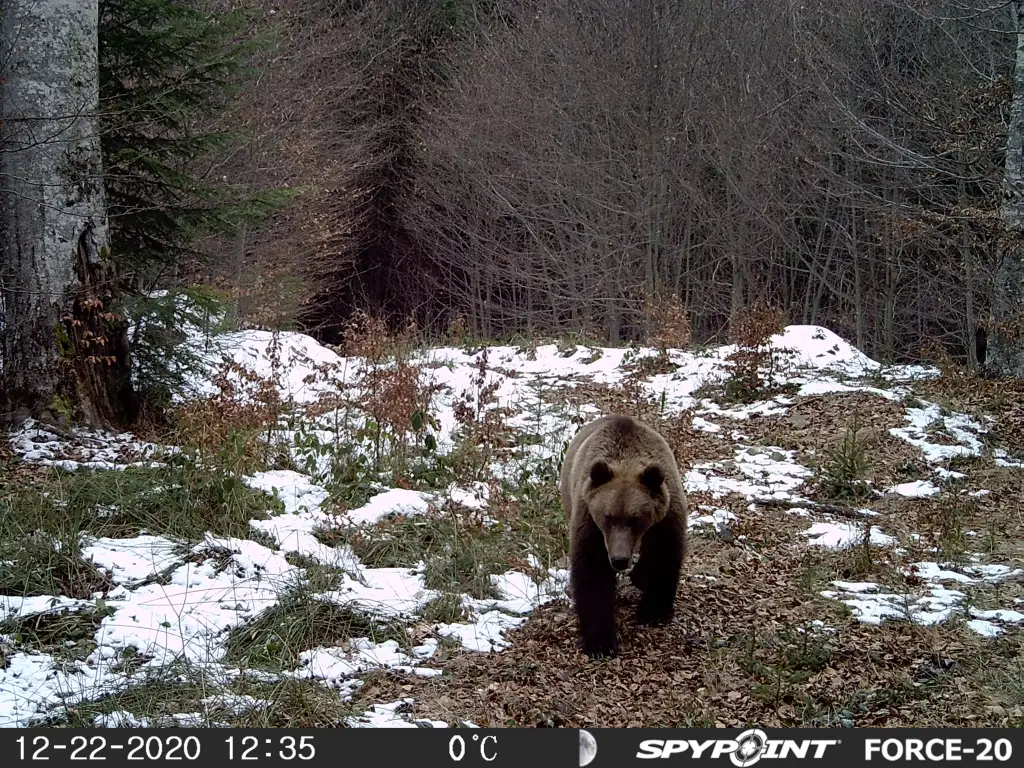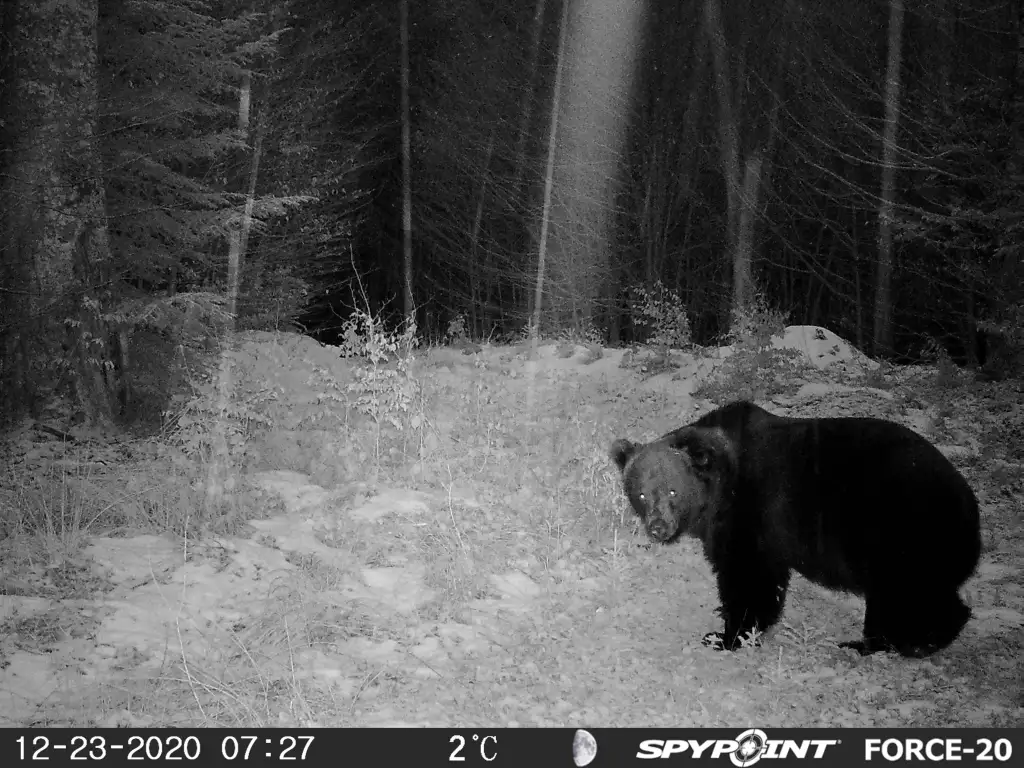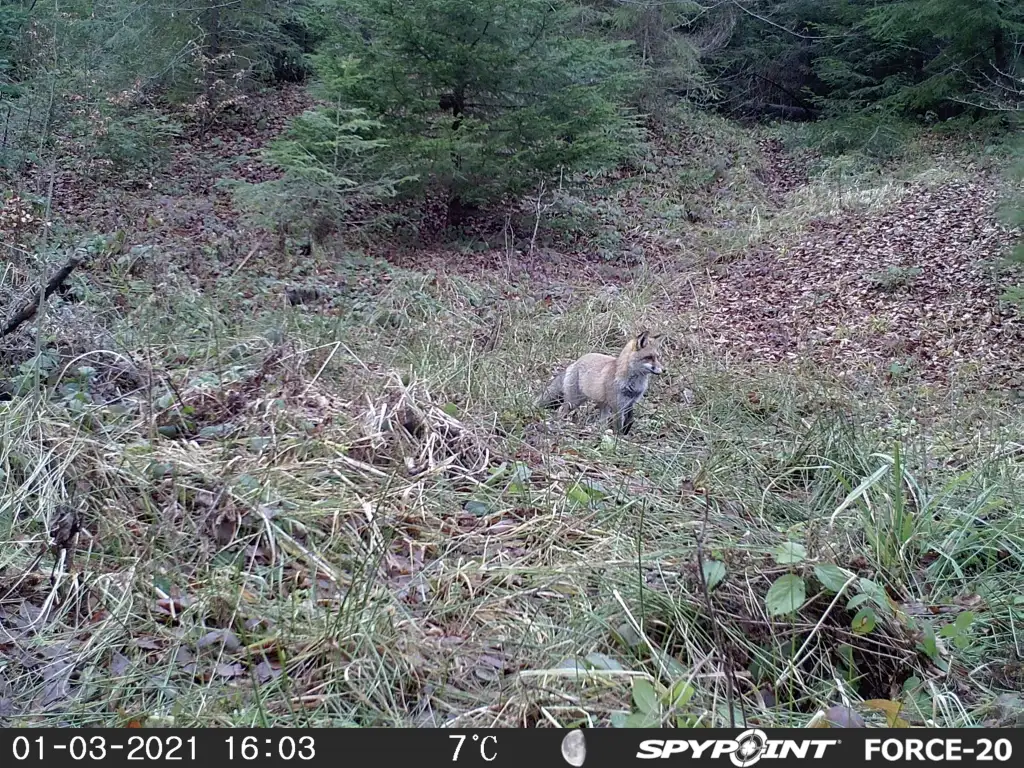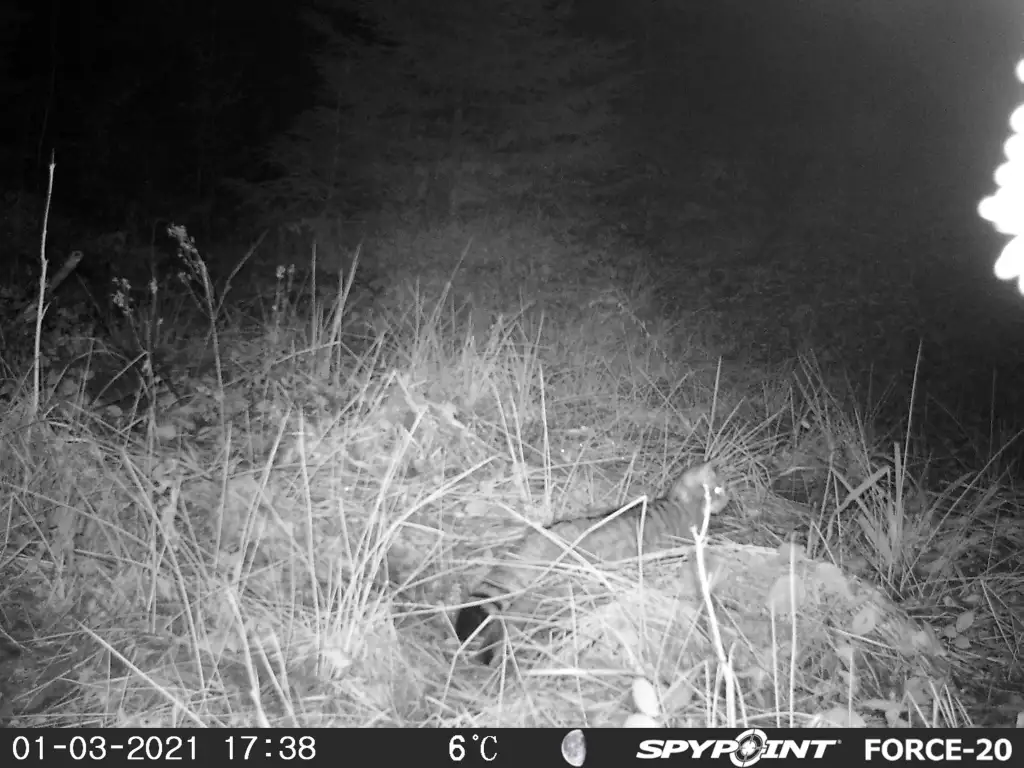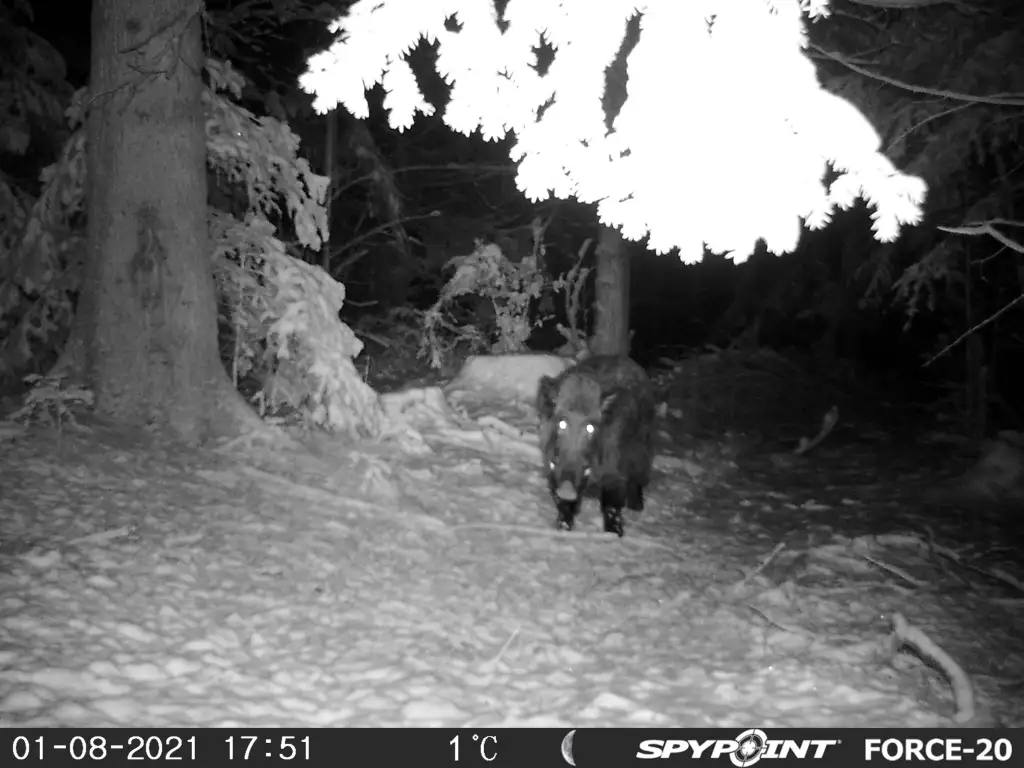Conservation Biology Lab @ Columbia University
quantitative wildlife ecology and conservation science
- https://phys.org/news/2023-02-livestock-predation-brown-romania.html
- https://www.ohio-forum.com/2022/08/cassandra-thompson-shows-danger-to-frogs-from-pesticide-but-points-out-a-solution/
- https://wildlife.org/coyotes-and-bobcats-coexist/
- https://wildlife.org/tws2020-protective-pesticides-for-trees-may-harm-frogs/
- https://wildlife.org/tws2020-transylvanian-carnivores-live-in-harmony/
- https://phys.org/news/2019-11-country-romania-cohabitation-strenuous.html
- https://news.yahoo.com/bear-country-romania-cohabitation-grows-strenuous-041055066.html
- https://phys.org/news/2019-11-turtles-highway-didnt-impacted.html
- https://www.sciencedaily.com/releases/2019/11/191106114200.htm
- https://www.eurekalert.org/pub_releases/2019-11/ou-wdt110619.php
- https://earther.gizmodo.com/a-fight-over-killing-bobcats-is-raging-across-the-midwe-1828682544
- https://www.dispatch.com/news/20180312/ohio-proposal-for-limited-bobcat-season-pits-trappers-vs-conservationists
LAB RESEARCH IN THE NEWS
REFERENCES for the 2021 “Fundamentals of Conservation Biology” 4th edition (Mac Hunter, James Gibbs and Viorel Popescu) textbook available for download as a .RIS file
Fall 2023: In other exciting news, the lab’s first Eastern Hellbender paper has been published open-access in journal Population Ecology (paper here). The work was led by PhD student Matt Kaunert (now Director of the Clean Water Institute at Lycoming College, PA) and involved collaborators from USGS, Columbus Zoo and the Ohio Hellbender Partnership and funding from the Ohio Division of Wildlife. This paper is the culmination of 4 years of PIT-tag surveys to evaluate the survival of headstart hellebdners released in Ohio streams; we found that while survival was low (0.16 across 4 years), headstarting is a good conservation strategy for rebuilding populaitons, and that successive releases at suitable sites are needed to rebuild populations. Read our press release here.
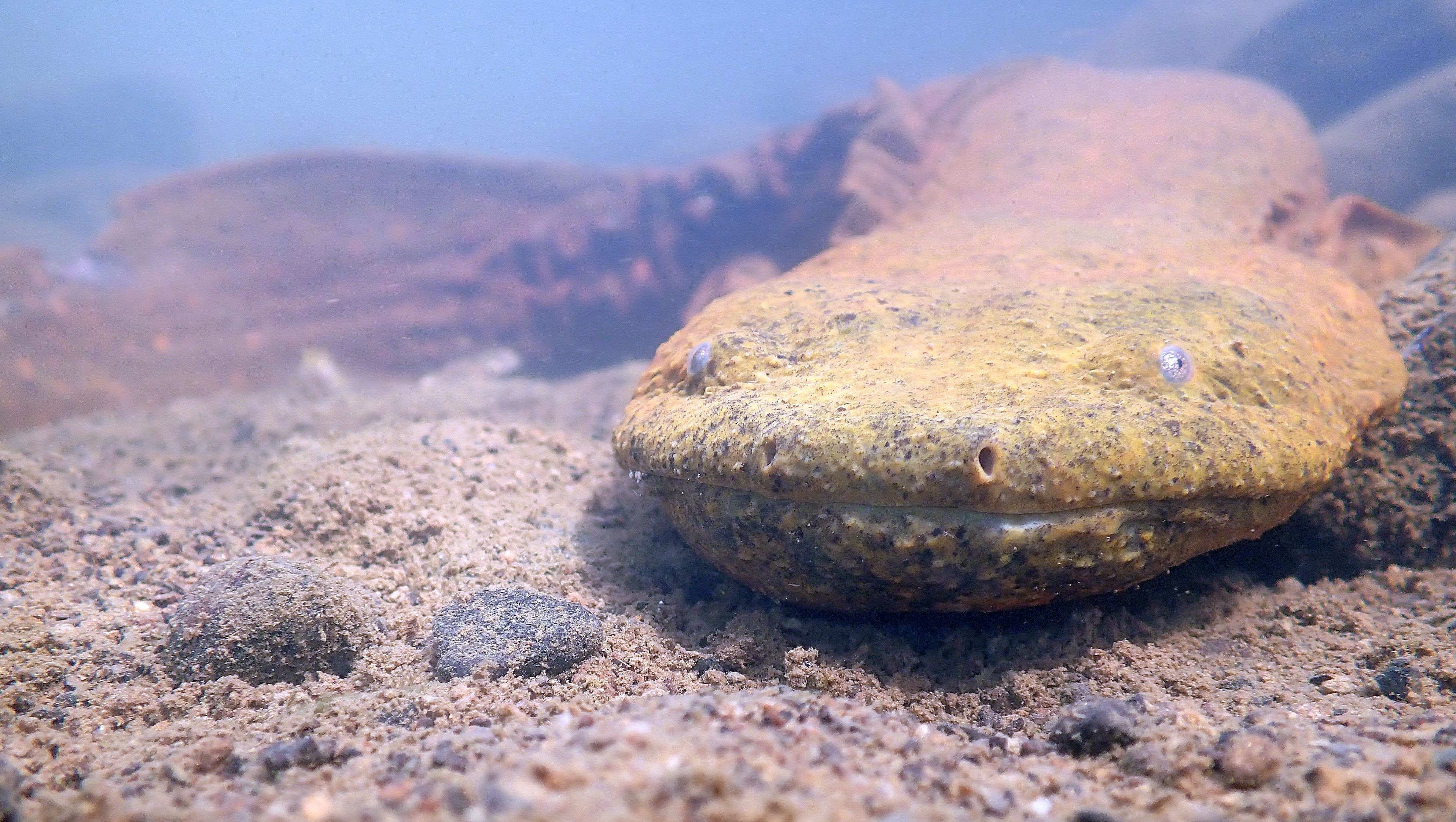
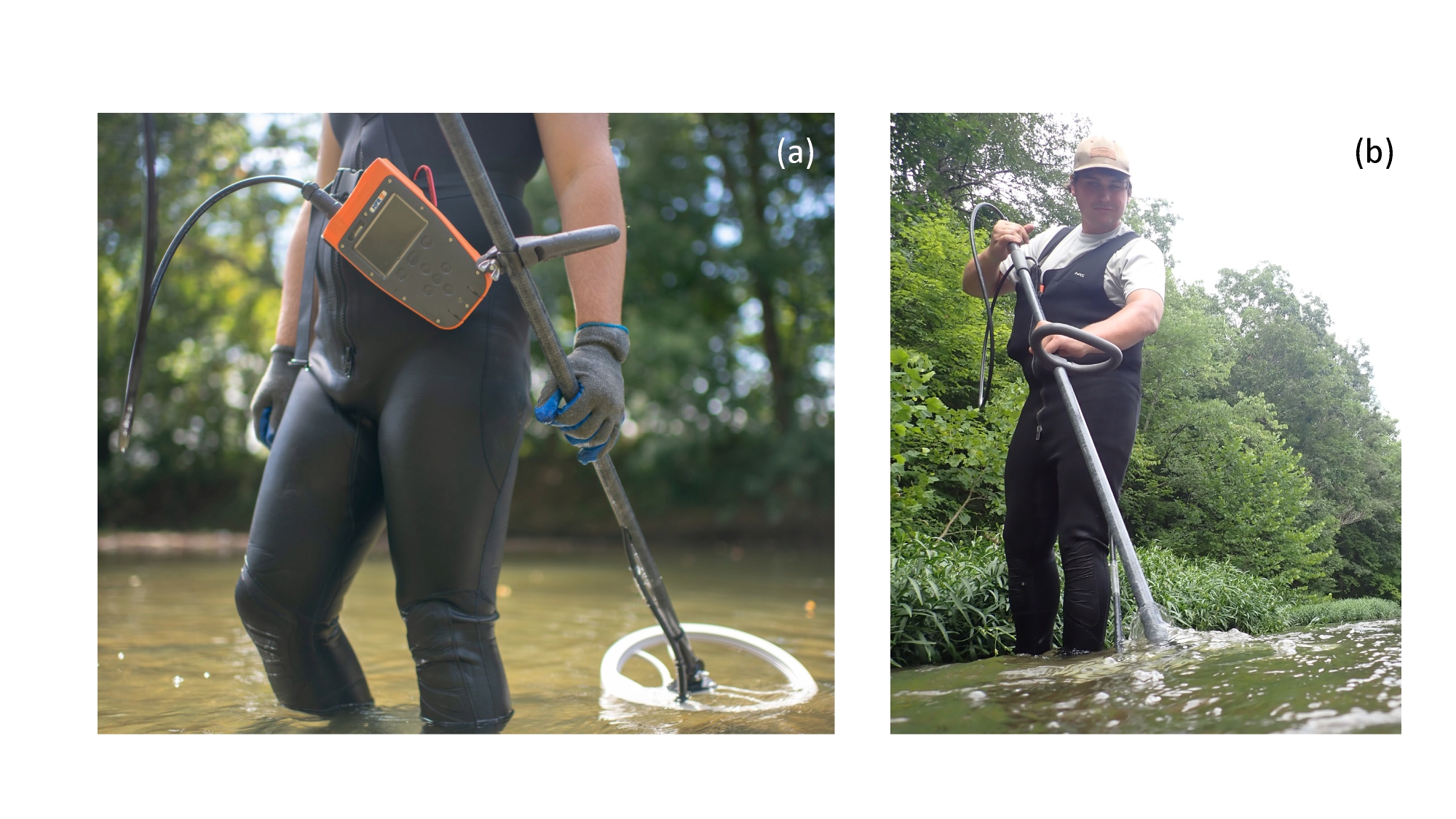

Fall 2023: Dr. Marissa Dyck’s Spatial PVA paper for Ohio’s bobcat population is out in The Journal of Wildlife Management (access open-access paper here). Thank you Dr. Shoemaker (Applied Population Lab at Univ of Nevada, Reno) for your sharing your PVA and coding prowess and Catherine Dennison (furbearer biologist at Ohio Division of Wildlife) for ensuring that the research is rooted in on-the-ground reality! We found that the Ohio bobcat population is expanding and can support a limited harvest season, but only if road mortality is accounted for (these cats are not great at crossing roads (and staying alive), as shown by former lab member Heidi Bencin (MSc 2018, Ohio University)).
Summer 2023: Our lab has moved to Columbia University E3B in New York City (from Ohio University, Athens)
Columbia E3B MA student Lucy Holland traveled to Romania to work with colleagues at Foundation Conservation Carpathia on spatial ecology of translocated European Bison! Exciting times chasing bison, visiting Dracula-land, but also data munging and dealing with a heap of GPS collar data
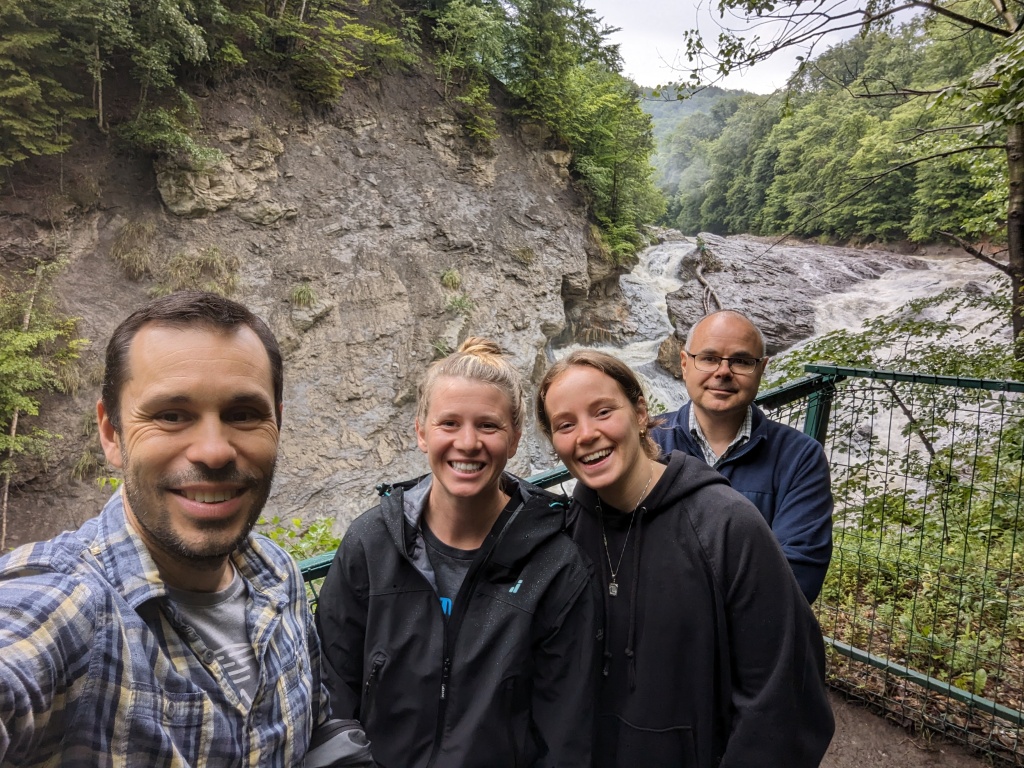
Newly-minted Dr. Marissa Dyck also traveled to Romania this Summer to deliver an R workshop to 25 colleagues from Romanian NGO, management agencies and academia. We topped that with an occupancy workshop held by my colleagues Dr. Raluca Bancila, Dr. Laurentiu Rozylowicz and myself… all in a great setting at Casa Tisaru in Lepsa, Vrancea.
Congratulations to Dr. Marissa Dyck (@Dyck_ologist) for wrapping up and successfully defending her dissertation on carnivore ecology in Romania and Ohio. With 3 chapters published (see Publications) and a couple more on the way, Marissa delved into advanced stats and modeling to evaluate the population viability and density of bobcats in Ohio, interspecific interactions between mesocarnivores and between top predators and mesocarnivores, as well as processes mediating predator-prey interactions in a Romanian large mammal guild.
Summer 2022 was a big Summer for our lab!!! In addition to lots of papers featuring graduate and undergraduate authors, a lot of exciting developments…
Congratulations to newly-minted Dr. Cassandra Thompson (@Hotherps) for successfully defending her dissertation on amphibians and climate change in July! With 3 chapters already published and another 2 on the way, Cassie has started a postdoc in amphibian ecology and modeling at Case Western Research University (with collaborator Dr. Mike Benard).
Huge congrats to Ryan Brown, who defended his MSc thesis on Eastern Hellbender ecology in August!!! Keep an eye for upcoming papers on experimental research debunking some long-standing ‘myths’ in hellbender ecology!
PhD student Marissa Dyck won the highest graduate student award from the American Society of Mammalogists (the ASM Fellowship) for her work on interspecific interactions between terrestrial carnivores in North America and Europe.
PhD student Matt Kaunert is starring as the hellbender scientist in an upcoming documentary around the fight (and victory!) of a small Pennsylvania community against the fossil fuel industry. HELLBENT (@hellbenderfilm) was created by Justin Grubb (Running Wild Media) and freelance journalist Annie Roth and is out August 2022.
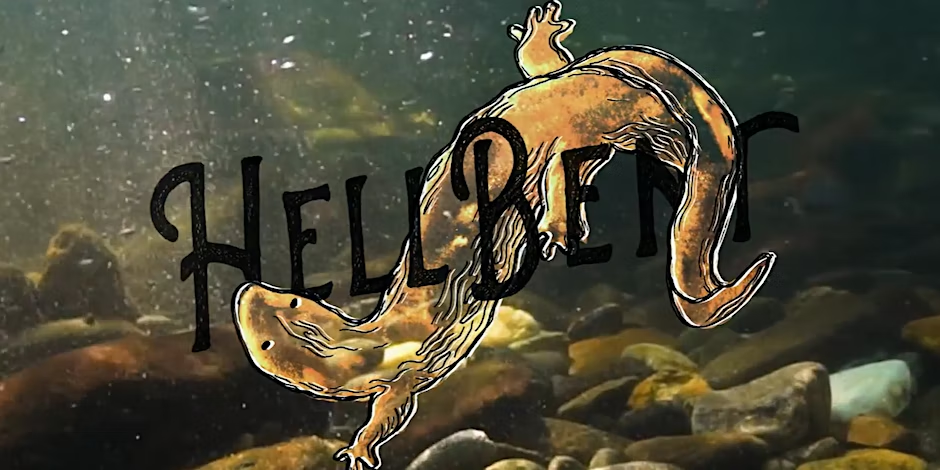
Spring 2022: After a 2-year process, the fruits of a collaboration with colleagues at Harvard University, University of East Anglia, the Chinese Academy of Sciences and TNC China are ripe! Check our new Nature Communications paper on using DNA from terrestrial leech meals (or iDNA) to monitor vertebrate biodiversity in SW China. This research also allowed us to evaluate the effectiveness of the protected areas for conserving vertebrate biodiversity. We found many IUCN-listed species (amphibians, reptiles, mammals, birds) in terrestrial leech meals; pioneering genomics and bioinformatics work (led by Dr. Doug Yu) and colleagues in China combined with Multi-Species Occupancy Models (led by Dr. Chris Baker) are a powerful combination for rapid biodiversity surveys!
Ji, Y., Baker, C.C.M., Popescu, V.D. et al. Measuring protected-area effectiveness using vertebrate distributions from leech iDNA. Nat Commun 13, 1555 (2022). https://doi.org/10.1038/s41467-022-28778-8
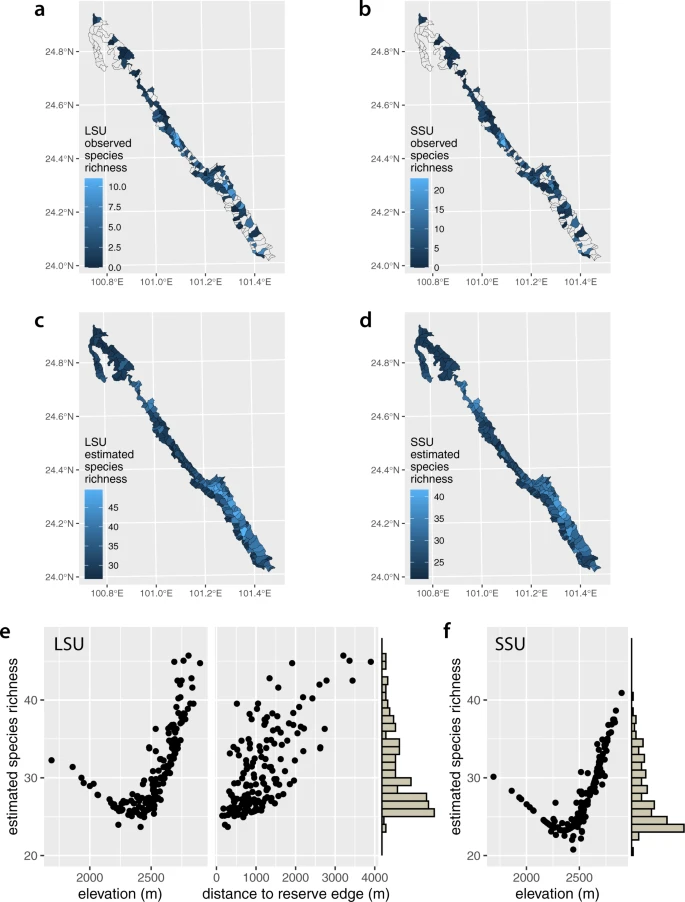
Fall 2021: It’s all about carnivores in N America! First off, a great collaboration between PhD students Marissa Dyck and Eileen Wyza led to the first assessment of competitive interactions between bobcat and coyotes in North America (published in Mammal Review). Second, our paper on the #RealBobcatsofOhio habitat suitability and connectivity is out in PeerJ; this is a collaboration with Ohio Division of Wildlife and the Peterman Lab at Ohio State University. We added another piece of the puzzle that is bobcat recovery in Ohio!


Summer 2021: New letter in Science hot off the press: Popescu, V. D., M. I. Pop, and L. Rozylowicz. 2021. Trophy hunting undermines public trust. Science 372:1049 LP – 1049. This perspective piece provides a critique of the current wildlife management in Romania, which is tolerant of trophy hunting for brown bears despite the species protected by EU legislation and payment for trophies being banned since 2016. Read more about the events that threw Romanian wildlife management in turmoil here.
Winter-Spring 2021: Lots of exciting news!!! We started 2 camera trap projects in Ohio and Romania aimed at evaluating interspecific relations between terrestrial carnivores (keep an eye on Twitter updates!). Also, after 4 years of sustained work, “Fundamentals of Conservation Biology” 4th edition textbook (with mentors Mac Hunter [University of Maine] and James Gibbs [SUNY-Environmental Science and Forestry]) is finally out!
- August 2020: We are welcoming Ryan Brown as a new MSc student in the lab! Ryan has been engaged with research in our lab since 2018, first as a undergraduate research assistant, then as a Lab Manager for the last year. Ryan obtained a degree from Hocking College prior to joining Ohio University, has a broad set of field skills, and is an encyclopedia of natural history knowledge. Ryan will work with Matt Kaunert exploring the lives and reproductive ecology of Eastern Hellbenders and contribute to proposing sound conservation strategies for hellbenders in Ohio and Pennsylvania.
- November 2019 – Heidi Bencin’s MSc research on road mortality in Ohio’s bobcat population is out in Scientific Reports! Heidi’s study integrated roadkill data across two decades, a GPS telemetry dataset to evaluate road-crossing behaviors, and theoretical estimations of road mortality risk at the population level to ultimate valuate predictors and hotspots of roadkill. Interstate highways were the top threat with high chance of mortality during crossings, and overall, we estimated that 6 – 18% of Ohio’s bobcat population may be affected by direct mortality from vehicle strikes. This finding is critical for projecting future population trajectory, which is the next step in the Ohio DNR funded project in the lab.
